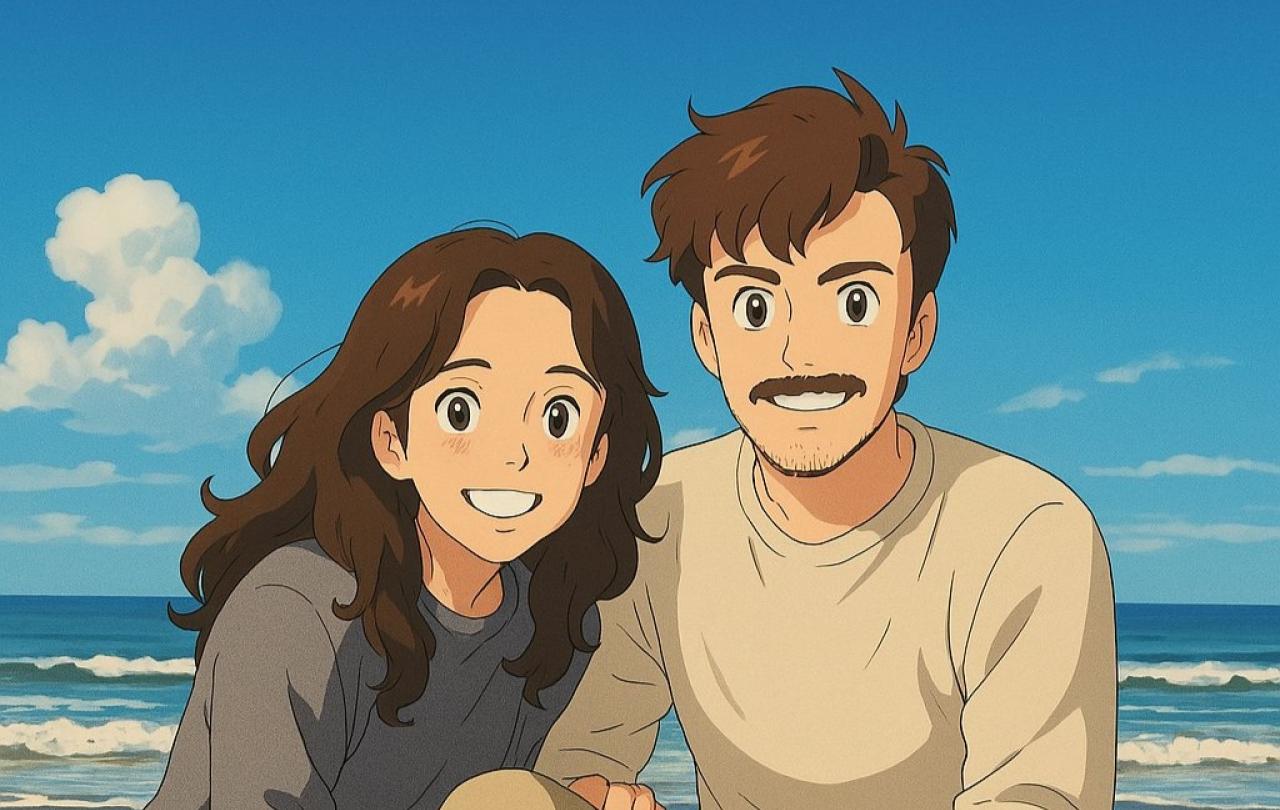
I ravenously devoured the last book I read, gobbling the majority of it up in one train journey. So swept up in it was I that I accidentally let my (extortionately expensive) tea go cold. The person sitting next to me must have changed three of four times throughout that journey and I’m ashamed to admit that I didn’t look up once. What do you call a person whose extroversion drains out of their body when a book is in their hand?
It was no surprise that this book found its way to me – I’m nothing if not a bandwagon-hopper. And Shon Faye’s latest book – Love in Exile - was a bandwagon I was itching to catch a ride on.
It piqued my interest for two reasons: the subject matter and the authorial perspective.
Firstly, the subject matter – it’s a nonfiction book about the nature of love and the state of romance. And that places it right up my street. If I’m being honest with you, I think about these subjects far too often. You could say that it’s my Roman(ce) Empire, an ‘at least once-a-day’ kind of topic.
The emotions tied up in romance - the language it evokes, the art it fuels, the power it wields - I find it all utterly fascinating. So, any book that’s analysing the romantic goings-on of a societal moment will catch my eye. Now, how about one written by a ludicrously talented transgender woman who ‘grew up quietly obsessed with the feeling that love is not for her’?
Oh, gosh. My interest levels are through the roof.
As I worked through the book, I realised that Shon’s experience of, and attitude toward, romance are completely different to mine; it’s like we’re looking at the same object but seeing different shapes, different colours. And that’s precisely why I wanted to read her book. I wanted to read about a topic I know so well from a perspective I don’t know at all. And it was fascinating, a true collision of the familiar and the unfamiliar.
It was like deciding to be a tourist in my own city, you know? Reading Shon’s words was like hiring someone to show me around my own postcode – letting them tell me about all the things I don’t see, the spots I don’t pay attention to, the streets I have no need to walk down. And Shon’s a good writer, a captivating tour guide – hence the cold tea and antisocial behaviour.
And then I get to the last chapter, entitled Agape.
I know that word, I thought. And I’m certain she’s not about to use it in the way I tend to use it – is she? Oh. She is. Shon Faye is about to round up her book on romance with a chapter about the love of God.
My jaw must have hit the train floor as I witnessed her tell her (very many) readers that there’s a spiritual function to romance. That part of the dating crisis we appear to be wading into is due to the spiritual dimension being pulled out of our understanding of love, making dating an inherently selfish endeavour. There’s a missing piece, she proposes, and it’s God.
Now, I don’t wish to misrepresent Shon, she has great trouble boxing herself into one particular religious tradition and/or understanding of God – I’m not planting a Christian flag in the ground of her book, here. But I must say, her reflections on the spiritual dimensions of romance can sit neatly alongside other Christian thinkers’ work on the same topic.
Romantic love is one of the most powerful forms of love, yet it alone, is never enough. It burns brightly, but too quickly. It needs help.
We can dismiss romantic love, roll our eyes at it, pretend we’ve grown out of it. We can boil it down to endorphins and pheromones – or we can take its power seriously, as Shon has done, and as C.S. Lewis did before her.
Lewis argued that the romantic form of love, when at its best and most noble, has a sort of divine-esque quality. It has a particular power because of its ‘strength, sweetness, terror and high port’- indeed, its tangible nature can teach us much about the passionate and intimate love that God has for us and that we’re supposed to have for each other. There’s a reason, I suppose, that a book of erotic literature is housed within the Bible (Song of Songs). Lewis writes that
‘This love is really and truly like Love Himself… it is as if Christ said to us through Eros (romantic love), “Thus – just like this – with this level of prodigality – not counting the cost – you are to love me and the least of your brethren”’.
His point being – this emotively-fuelled form of love matters. Why? Because it points beyond itself to something truer, deeper, bigger.
I always marvel at Taylor Swift’s (yes, she’s being brought up – you’re reading an essay on romance, I shan’t apologise) habit to reach for religious language and motif when she’s trying to confine her biggest and deepest feelings to language. For example, when singing to a man that she has come to regard as ‘the smallest man who ever lived’, she announces that ‘I would’ve died for your sins, instead I just died inside…’ This isn’t trivial. What’s the deepest, most self-sacrificing act of love she has in her locker of references? Jesus dying for peoples’ sins. An act which, apparently, her romantic feelings for this undeserving man point her toward. Jesus’ death is the only love-fuelled act that feels true enough to sit within this anthem of heartbreak.
Interesting, isn’t it?
Romantic love is one of the most powerful forms of love, yet it alone, is never enough. It burns brightly, but too quickly. It needs help. It needs something to fill its (many) gaps. It needs parameters. It needs, Lewis argues, to be ruled. And this is where he and Shon Faye are in surprising alignment.
So strong is romantic love, that we can over-trust it, over-honour it, we can strip it of any kind of self-giving-ness and make it some kind of agent of our own salvation. It can make us selfish, tempt us to use it as a tool of redemption. Instead of pointing toward God, it tricks us into treating it as if it is God. This is precisely what Shon Faye warns her readers of: if you don’t have something to rule over this super-charged form of love, it will rule over you.
We must, both Shon Faye and C.S. Lewis argue, re-imbue romance with spiritual meaning.
We must not fool ourselves into thinking that it is everything, nor should we kid ourselves into regarding it as nothing. We must consider it a glimpse of the love that is God and treat it accordingly.
Celebrate our 2nd birthday!
Since March 2023, our readers have enjoyed over 1,000 articles. All for free. This is made possible through the generosity of our amazing community of supporters.
If you enjoy Seen & Unseen, would you consider making a gift towards our work?
Do so by joining Behind The Seen. Alongside other benefits, you’ll receive an extra fortnightly email from me sharing my reading and reflections on the ideas that are shaping our times.
Graham Tomlin
Editor-in-Chief





